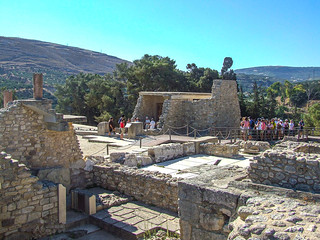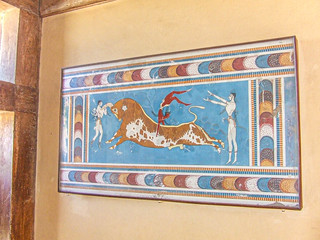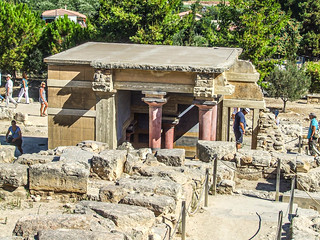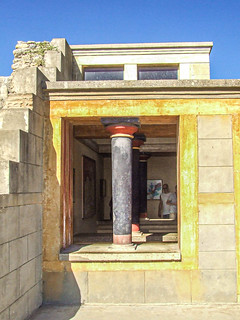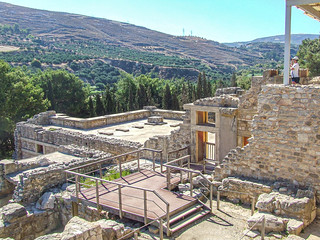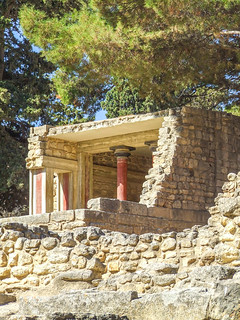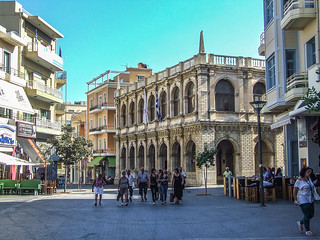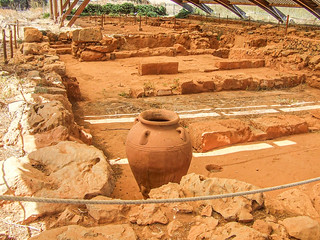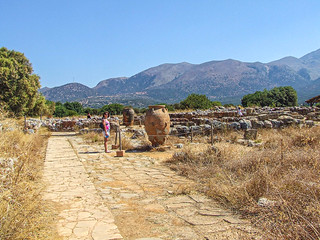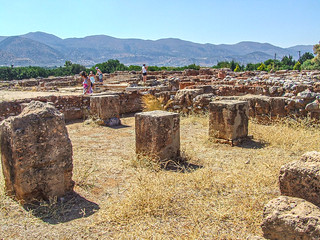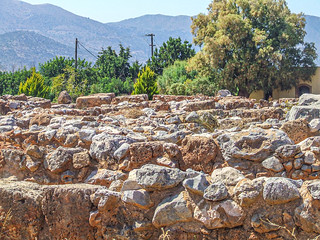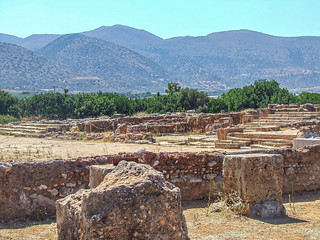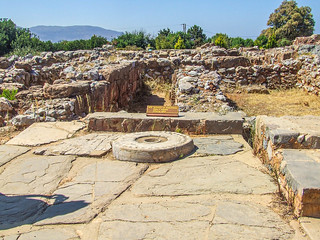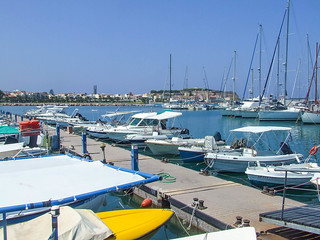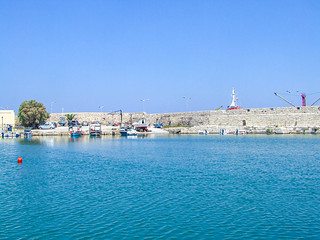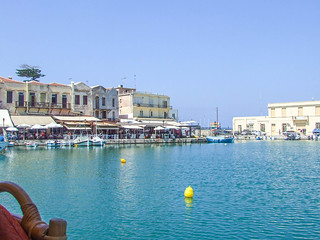About Knossos
Arthur Evans, who unearthed the palace of Knossos in modern times, estimated that c. 8000 BCE a Neolithic people arrived at the hill, probably from overseas by boat, and placed the first of a succession of wattle and daub villages (modern radiocarbon dates have raised the estimate to c. 7000–6500 BCE). Large numbers of clay and stone incised spools and whorls attest to local cloth-making. There are fine ground axe and mace heads of colored stone: greenstone, serpentine, diorite and jadeite, as well as obsidian knives and arrowheads along with the cores from which they were flaked. Most significant among the other small items were a large number of animal and human figurines, including nude sitting or standing females with exaggerated breasts and buttocks. Evans attributed them to the worship of the Neolithic mother goddess and figurines in general to religion.
It is believed that the first Cretan palaces were built soon after c. 2000 BC, in the early part of the Middle Minoan period, at Knossos and other sites including Mallia, Phaestos and Zakro. These palaces, which were to set the pattern of organisation in Crete and Greece through the second millennium, were a sharp break from the Neolithic village system that had prevailed thus far. The building of the palaces implies greater wealth and a concentration of authority, both political and religious. It is suggested that they followed eastern models such as those at Ugarit on the Syrian coast and Mari on the upper Euphrates.
In Greek mythology, King Minos dwelt in a palace at Knossos. He had Daedalus construct a labyrinth, a very large maze (by some connected with the double-bladed axe, or labrys) in which to retain his son, the Minotaur. Daedalus also built a dancing floor for Queen Ariadne.[26] The name "Knossos" was subsequently adopted by Arthur Evans.
As far as is currently known, it was William Stillman, the American consul who published Kalokairinos' discoveries, who, seeing the sign of the double axe on the massive walls partly uncovered by Kalokairinos, first associated the complex with the labyrinth of legend, calling the ruins "labyrinthine". Evans agreed with Stillman. The myth of the Minotaur tells that Theseus, a prince from Athens, whose father is an ancient Greek king named Aegeus, the basis for the name of the Greek sea (the Aegean Sea), sailed to Crete, where he was forced to fight a terrible creature called the Minotaur. The Minotaur was a half man, half bull, and was kept in the Labyrinth – a building like a maze – by King Minos, the ruler of Crete. The king's daughter, Ariadne, fell in love with Theseus. Before he entered the Labyrinth to fight the Minotaur, Ariadne gave him a ball of thread which he unwound as he went into the Labyrinth so that he could find his way back by following it. Theseus killed the Minotaur, and then he and Ariadne fled from Crete, escaping her angry father.
en.wikipedia.org







